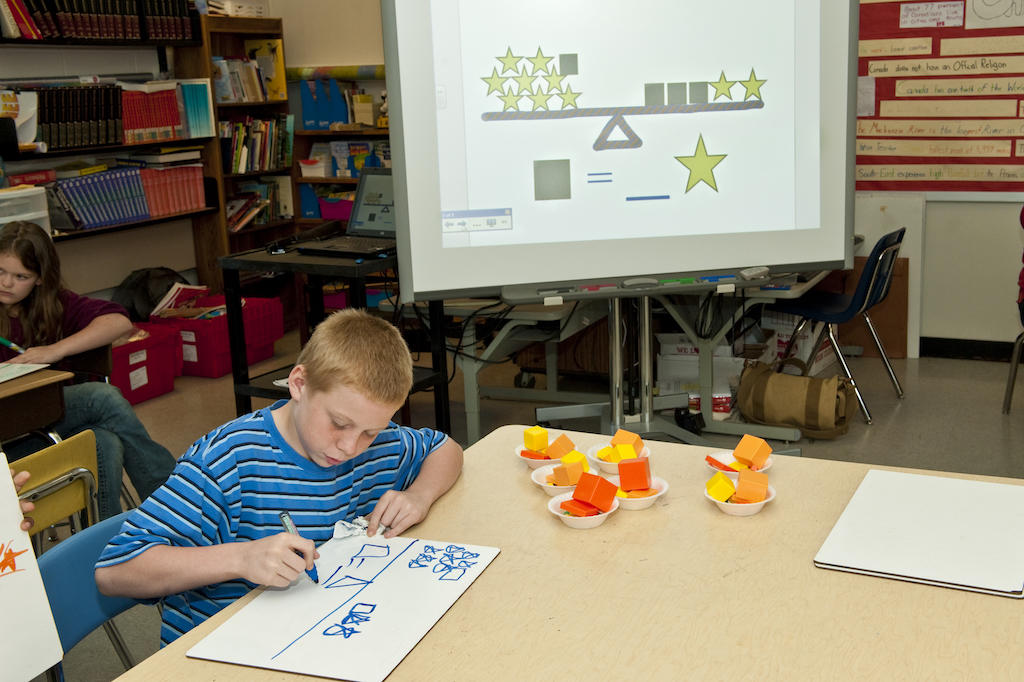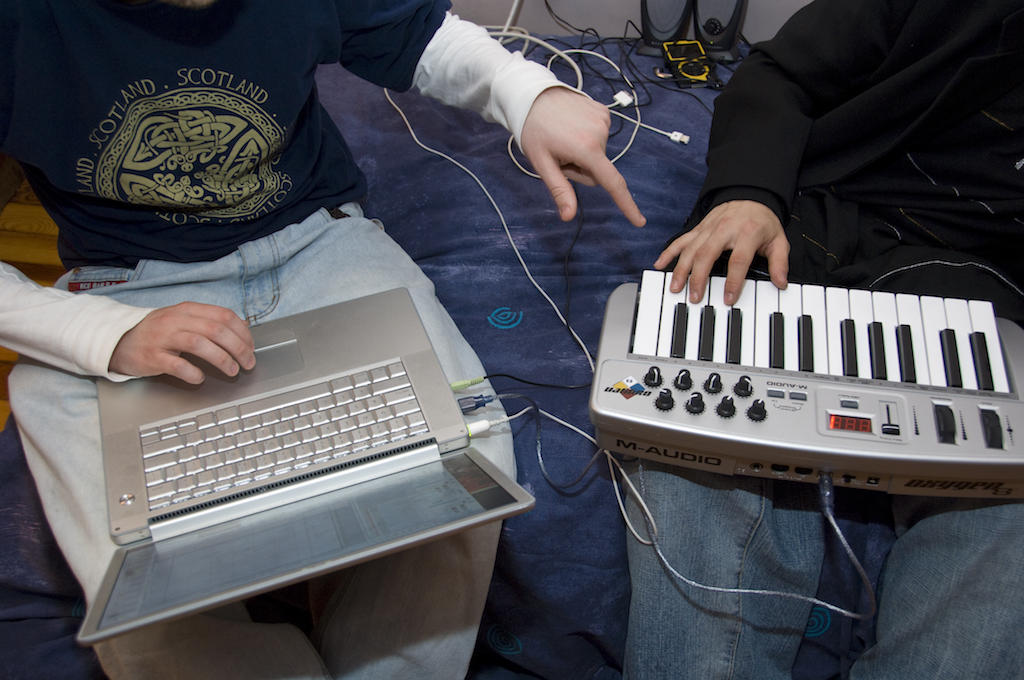
Taking Your First Steps Toward Blended Learning
“I was that teacher who would go to a workshop over the summer and get all fired up about adding lots of new techniques, and then suddenly it would be November and I’d realize we hadn’t touched our online portfolios in two months, which was frustrating and disheartening,” says Avra Robinson, Director of Online Learning and an Instructor for EdTechTeacher.
When it comes to beginning the transition to Blended Learning, Robinson advises that instead of biting off too much, that teachers cultivate small successes for themselves. “Keep it manageable,” she says. “That way, as you start to see students benefiting, you can feel good about what you’ve done, which will motivate you to incorporate more Blended Learning practices.”
How Blended Learning Empowers Children to Learn
Those practices support what she calls “voice and choice,” giving kids a say in how they go about the job of learning, both in terms of how they take in information and in how they demonstrate their understanding of that information.
A useful distinction in this respect is the difference between using technology as a tool for consumption and using it as a means of creation. Students can consume content using devices and online tools – reading articles, viewing videos – but the real power, Robinson says, “is using technology as a creation tool. They can show what they learned – about the lifecycle of frogs for example – by creating a meme, song, video or illustration.”
Incorporating Technology Is Not the Same as Blended Learning
The goal is not to merely use online tools; it’s to provide the means for students to personalize their own learning, Robinson says. “We want to offer them a variety of digital and more traditional technologies, for example paper and pencil because some students learn better through writing. The idea is to differentiate learning for our students, to give different kids different ways into the content.”
At the same time, she says teachers shouldn’t shy away from the power of devices to engage kids. “We don’t want to use technology for technology’s sake, but a major advantage of digital and online tools is how they can engage kids. They make it fun, and for kids to want to learn, it has to be fun, and it has to seem attainable. If it’s fun, they’ll spend time figuring out how best to do it.”
“I was that teacher who would go to a workshop over the summer and get all fired up about adding lots of new techniques, and then suddenly it would be November and I’d realize we hadn’t touched our online portfolios in two months, which was frustrating and disheartening,” says Avra Robinson, Director of Online Learning and an Instructor for EdTechTeacher.
When it comes to beginning the transition to Blended Learning, Robinson advises that instead of biting off too much, that teachers cultivate small successes for themselves. “Keep it manageable,” she says. “That way, as you start to see students benefiting, you can feel good about what you’ve done, which will motivate you to incorporate more Blended Learning practices.”
How Blended Learning Empowers Children to Learn
Those practices support what she calls “voice and choice,” giving kids a say in how they go about the job of learning, both in terms of how they take in information and in how they demonstrate their understanding of that information.
A useful distinction in this respect is the difference between using technology as a tool for consumption and using it as a means of creation. Students can consume content using devices and online tools – reading articles, viewing videos – but the real power, Robinson says, “is using technology as a creation tool. They can show what they learned – about the lifecycle of frogs for example – by creating a meme, song, video or illustration.”
Incorporating Technology Is Not the Same as Blended Learning
The goal is not to merely use online tools; it’s to provide the means for students to personalize their own learning, Robinson says. “We want to offer them a variety of digital and more traditional technologies, for example paper and pencil because some students learn better through writing. The idea is to differentiate learning for our students, to give different kids different ways into the content.”
At the same time, she says teachers shouldn’t shy away from the power of devices to engage kids. “We don’t want to use technology for technology’s sake, but a major advantage of digital and online tools is how they can engage kids. They make it fun, and for kids to want to learn, it has to be fun, and it has to seem attainable. If it’s fun, they’ll spend time figuring out how best to do it.”

Starting Small with Blended Learning
Rather than revamping your whole curriculum, allocate an hour or two a week to trying different forms of Blended Learning.
For example, one week, you can try Flipped Learning (a form of Blended Learning) by making a video of yourself introducing new material. Students can rotate between stations, one where they wear headphones and view the video at their own pace and another where they work on related material or do a homework-type activity.
Pausing the Instructor
“Kids minds wander like ours do,” Robinson says. “The great thing about video is that students can control the pace of instruction to suit their needs. They can pause and rewind to review areas they are unsure about.”
Noting that some kids may feel like failures trying to pay attention to a teacher lecturing from the front of the classroom, she says they may be very engaged by a video covering the topic. As they begin grasping the material, that small success begets larger ones.
Other Avenues Into Content
Another week, “starting small” may mean offering students the chance to use a screencast program (many are free) to demonstrate what they’ve learned. This gives students who aren’t as adept at writing answers to questions the opportunity to instead talk about what they’ve learned.
Why Blended Learning?
“Anytime you feel success, you want to keep doing it. What’s great about Blended Learning is that it allows kids to experiment with a wide range of tools to find their own personal form of success,” Robinson says. “We make kids sit in class and learn from the time they’re five until they’re 18. Giving them back some control over their learning helps them feel more responsible for it and allows them to discover what kind of learners they are.”
The approach also supports students in experiencing technology as a learning tool. As digital natives, kids are very comfortable with technology and this can lead to the mistaken assumption that they know how to use it in the service of learning. Robinson says educators need to guide students to using technology to support educational objectives.
Preparing Kids for the Future
Another big advantage of Blended Learning is the freedom it gives students to figure out which avenues to learning seem to work best for them. Robinson says, “We do students a disservice if we pigeonhole them into a specific kind or set of content or skills. They have to be ready to learn skills that don’t exist yet, to prepare for jobs that don’t exist yet. Learning how to learn may be the most important skill we can teach them.”
About Avra Robinson: The Director of Online Learning and an Instructor for EdTechTeacher, Robinson is also an Adjunct Faculty member for Kishwaukee College in Malta, Illinois. She’s an authorized Google Education Trainer and dedicated educational technologist and has been working with teachers and students for over 20 years. Prior to joining EdTechTeacher, she was a classroom teacher and later the Instructional Technology Coordinator and coach for a K-8 school district in Northern Illinois. During that time, she worked with teachers and students on a daily basis as they worked towards total Common Core State Standards integration in a 1:1 program that included Chromebooks, iPads, and Windows laptops. She has presented at local and regional conferences sharing ideas about digital publishing, coaching teachers, Google Apps for Education, and more.

